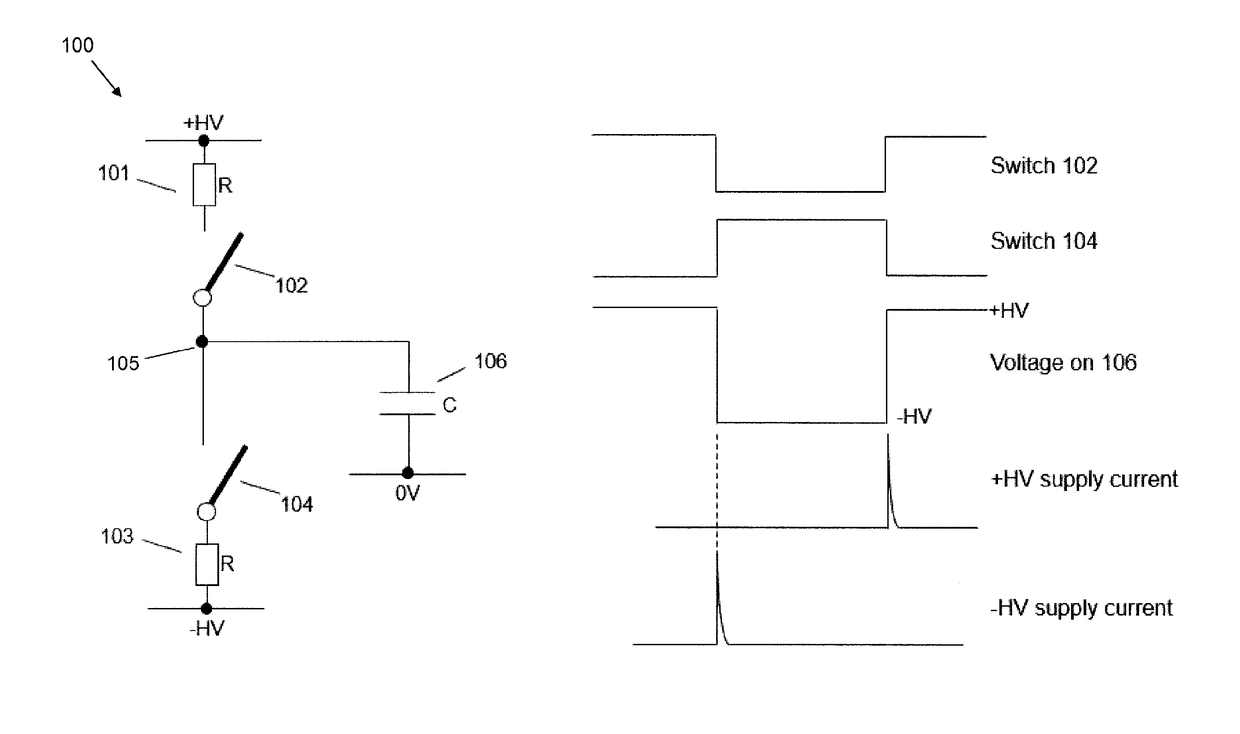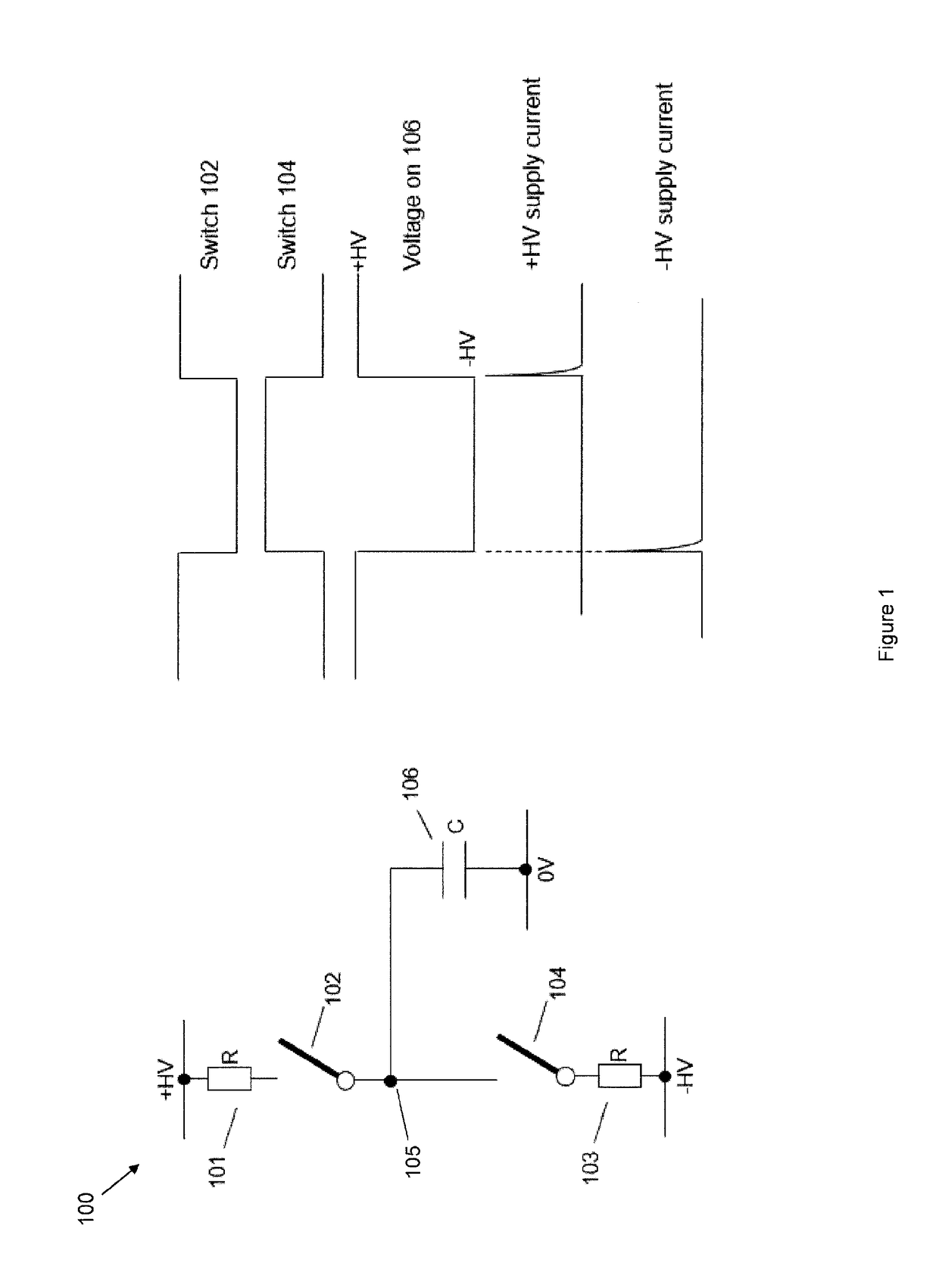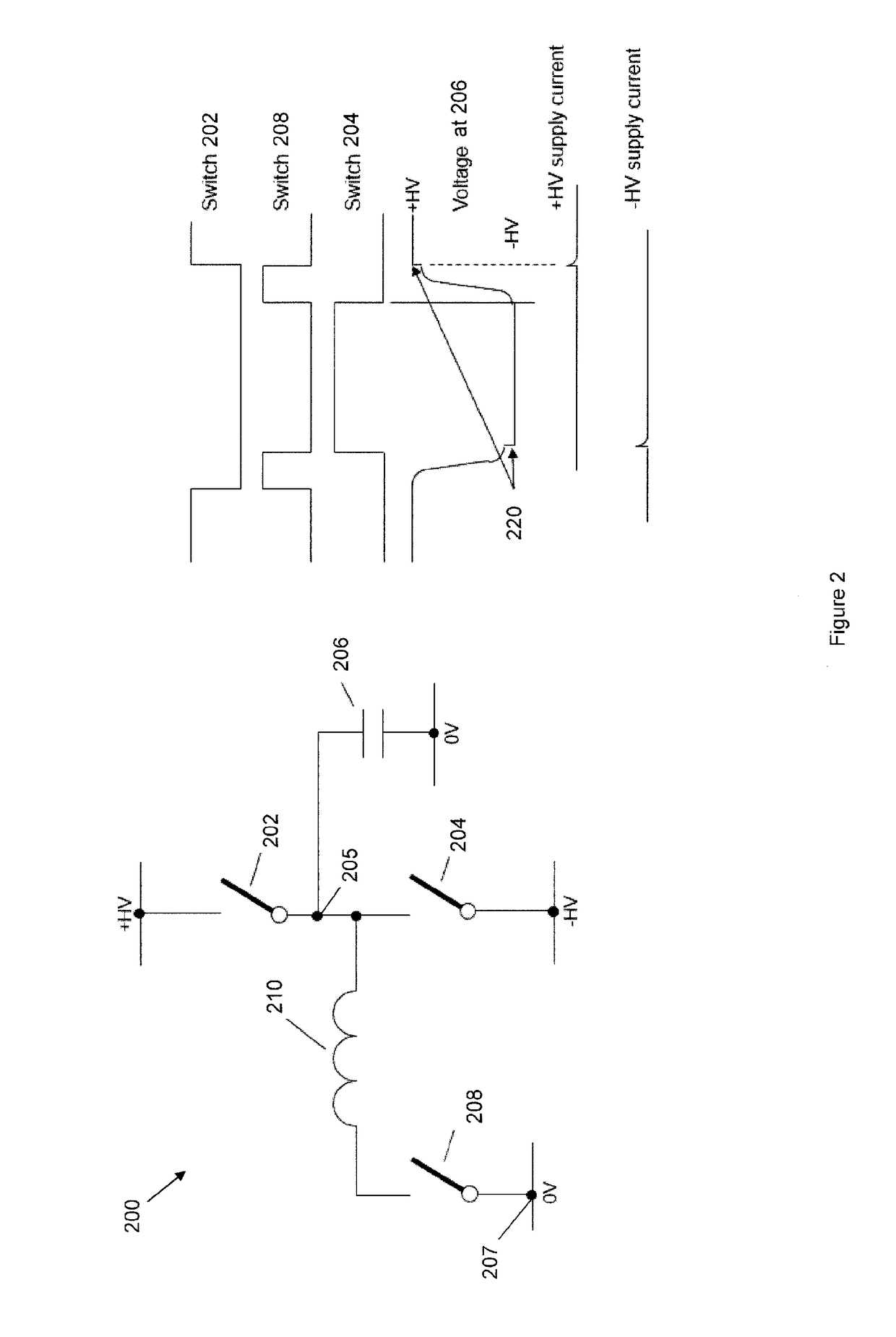A circuit for generating a voltage waveform at an output node
- Summary
- Abstract
- Description
- Claims
- Application Information
AI Technical Summary
Benefits of technology
Problems solved by technology
Method used
Image
Examples
Embodiment Construction
[0090]Polarity switching is an important feature of all types of ToF mass spectrometers and is particularly suited to Ion Trap ToF mass spectrometers. Faster switching improves throughput, duty cycle and sensitivity. In simple terms the higher the rate of switching, the better the overall performance. A problem throughout the industry is that conventionally a high rate of switching is a very difficult objective to meet for reasons outlined below.
[0091]Herein, the term “high voltage” (or simply “HV”) may be used to refer to a voltage that has a magnitude that is at least 100V, more preferably at least 1000V, with respect to a ground that may be between the first anchor voltage and the second anchor voltage. Similarly, a “high voltage” power supply may be used to refer to a voltage source that is capable of generating a voltage that has a magnitude that is at least 100V, more preferably at least 1000V, with respect to a ground that may be between the first anchor voltage and the secon...
PUM
 Login to View More
Login to View More Abstract
Description
Claims
Application Information
 Login to View More
Login to View More - R&D
- Intellectual Property
- Life Sciences
- Materials
- Tech Scout
- Unparalleled Data Quality
- Higher Quality Content
- 60% Fewer Hallucinations
Browse by: Latest US Patents, China's latest patents, Technical Efficacy Thesaurus, Application Domain, Technology Topic, Popular Technical Reports.
© 2025 PatSnap. All rights reserved.Legal|Privacy policy|Modern Slavery Act Transparency Statement|Sitemap|About US| Contact US: help@patsnap.com



